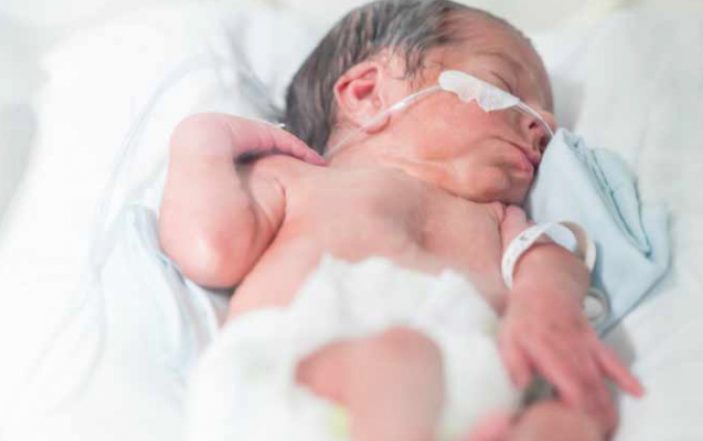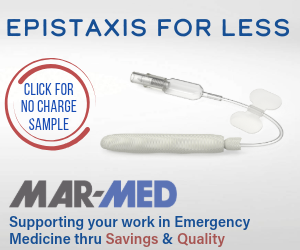How to approach pediatric mechanical ventilation in the emergency department.
Case
A previously healthy, full term, 4 kg 3-week-old male is referred to the emergency department from his pediatrician with retractions and hypoxia. This was preceded by two days of cough and congestion. On arrival to the emergency department he appears mottled, with intercostal and subcostal retractions. He has a saturation of 85% on room air. He is placed on high flow nasal cannula oxygen; IV access is obtained and a rapid RSV swab is positive. Over the next 30 minutes he has increasing periods of apnea requiring vigorous stimulation. The decision is made to intubate the child and transfer to a tertiary center for admission. Intubation is successful with a 3.0 cuffed tube. The respiratory therapist, who is fresh out of training, and unfamiliar with mechanical ventilation in a child this size, turns to you and says “what vent settings do you want?”
Background
A critically ill child, particularly one requiring endotracheal intubation and mechanical ventilation, quickly raises the anxiety in the ED. For starters, there can be confusion about appropriately sized equipment. Although there is some concern about accuracy of weight for medication dosing, a length-based resuscitation tape (such as a Broselow™ tape) can provide a quick estimation of appropriately sized equipment (1). There are also numerous phone apps that can assist with determining appropriate equipment and medication doses.
If other sources are unavailable, the mnemonic “Miller 2 at age 2” should be helpful as a ballpark for DL blade size, and the formula (Age/4) + 3.5 = cuffed endotracheal tube size can be a quick estimate of the appropriately sized ET tube. It should be noted that cuffed ET tubes are now preferred in all ages whenever available (2).
There is often a moment of relief after an endotracheal tube is successfully placed and a feeling of the hard part being over. However, selecting appropriate mechanical ventilation settings is arguably more important than placing the tube. Pediatric patients, similar to adults, can be intubated for pulmonary pathology (pneumonia, bronchiolitis, asthma, etc.) or non-pulmonary, typically CNS pathology, (seizures, trauma, etc.). Fortunately, the starting weight-based tidal volume settings, ventilator modes, ventilator strategies in challenging cases, and PEEP settings are similar in children and adults.
As a general rule, children intubated for non-pulmonary indications are not challenging to ventilate, and a simple strategy of a volume or pressure control mode targeting a tidal volume (Vt) of 6-8 cc/kg of ideal body weight, an age-appropriate respiratory rate (Table 1), and a PEEP of 5 cmH2O will suffice for almost all patients (3). Note the child intubated for severe metabolic acidosis will need higher respiratory rates in order to compensate.
Table 1: Age Appropriate Respiratory Rates (Adapted from Flemming et. al 2011) (4).
| Age | Normal Respiratory Rate |
| 0 – 12 months | 35-55 |
| 12 months – 2 years | 25-45 |
| 2 years – 6 years | 20-30 |
| 6 years – 12 years | 20-25 |
Infectious Pulmonary Pathology in Children
Infectious pulmonary pathology is a common indication for intubation in children. Infectious etiologies such as bacterial pneumonia and viral bronchiolitis are the most common indications for intubation. It is important to understand that these children are at risk for subsequent acute respiratory distress syndrome (ARDS) and ventilator-associated lung injury. If there are already signs of ARDS with diffuse interstitial infiltrates on a chest x-ray and moderate to severe hypoxia, a lung protective strategy should be considered. Lung protective strategy in ventilated children consists of a volume-targeted mode with a Vt of 4-6 cc/kg and a PEEP of 8-10 cmH2O to start (5).
PEEP improves oxygenation by recruitment and by maintaining lung aeration (6). Target a peak pressure of < 30-35 cmH2O (Figure 1) and/or a plateau pressure < 28 cmH2O (3). Peak pressure is the sum of airway resistance, plateau pressure and PEEP (both applied- and auto-PEEP), compared to plateau pressure, a measure of lung compliance. High peak pressures with a normal plateau pressure are indicative of high airway resistance and can be due to several causes: bronchospasm (e.g. asthma, anaphylaxis etc.), kinked tube, small diameter tube or ventilator circuit obstruction.
Plateau pressure elevation can be seen with pneumothorax, ARDS (or other restrictive lung disease), overdistension by excessive Vt, right mainstem intubation, pneumonia, pulmonary edema and auto-PEEP (7). A high peak pressure with significant difference between the peak and plateau pressures (>5 cmH2O) typically means acute elevation in airway resistance (Figure 3); however, if the difference is low (< 5 cmH2O), decreased lung compliance is likely the etiology. If the peak pressure is > 35 cmH20 with an associated high plateau pressure (>30 cm H20), decrease the Vt by 1 cc/kg to as low as 3-4 cc/kg until the peak pressure is < 35 cmH2O and/or plateau pressure is < 28 cmH2O (5,7).
As the Vt is decreased, the respiratory rate may need to be increased to maintain a normal minute ventilation. It is important to remember that hypercapnia can be tolerated as long as the pH remains above 7.20 (3). An important caveat is in patients with pulmonary hypertension and head injury where normocapnia (pCO2 35-45 mmHg) should be targeted (3).
 |
Obstructive Pulmonary Pathology in Children
Patients with obstructive pulmonary pathology, asthma in particular, are some of the most challenging and high-risk patients on mechanical ventilation. Often the best care for an asthmatic child is to avoid endotracheal intubation and mechanical ventilation if at all possible. Maximal therapy including inhaled bronchodilators, parenteral steroids, magnesium and even IV/IM beta agonists such as epinephrine or terbutaline should be given in an effort to avoid intubation. In addition, non-invasive mechanical ventilation such as high flow nasal cannula or bi-level non-invasive ventilation (BiPAP™) can be used as a bridge therapy to give medical therapy time to work. Despite maximal therapy, a subset of asthmatics will require mechanical ventilation (8).
The main challenge in pediatric asthmatic patients is not only are they at risk for ventilator associated lung injury, but due to airway inflammation and bronchoconstriction, they are at high risk for a ventilator associated pneumothorax, breath stacking and auto-PEEP (a condition where they are not able to completely exhale each breath) (Figure 2).
Careful attention must be paid to maintaining tidal volumes of 6-8 cc/kg and respiratory rates, often quite low, that allows the child to completely exhale to avoid breath stacking and auto peeping. There are several ways to determine the optimal respiratory rate to avoid these complications. One strategy is to observe the flow volume curve on the ventilator to gauge how long it takes the child to exhale one breath (Figure 2). Another strategy is to give the child one breath via bag mask through the endotracheal tube and count the seconds it takes for the child to completely exhale. Many ventilated children need a respiratory rate as low as 10-14/min; the sickest may require even lower.
 |
The first 15 minutes after an asthmatic is intubated are critical, and the physician must pay careful attention to both the patient and the ventilator. These patients typically exhibit a high degree of patient-ventilator dyssynchrony due to respiratory acidosis. If the asthmatic has a high spontaneous respiratory rate that is difficult to manage, they may require deep sedation and paralysis. If paralyzed, be sure to continue adequate sedation. Furthermore, patients with airway obstruction (i.e. asthma) have very high airway resistance leading to increased peak inspiratory pressures Figure 3).
An elevated peak pressure without a rise in plateau pressure is not generally harmful, as these elevated peak pressures are not transmitted to the alveoli (6). However, a high peak pressure should alert the physician to obtain a plateau pressure. The plateau pressure is usually obtained by selecting the “end-inspiratory hold” option on your ventilator. The ventilator holds in the inspiratory volume, stops flow (resistance) and measures the pressure (see figure 3).
The measured plateau pressure includes both lung compliance and total PEEP (both set and auto-PEEP). In the asthmatic a high plateau pressure is most likely from auto-PEEP rather than poor lung compliance. To directly measure auto-PEEP an end expiratory hold in a passive patient is performed (Figure 2)(9). In obstructive lung disease, the plateau pressure should be kept ≤ 30 cmH2O. Plateau pressure estimates alveolar pressure, and when elevated > 30 cmH2O can lead to barotrauma, pneumothorax and diminished venous return to the heart (3,9). If the plateau pressure is elevated or approaching > 30 cmH2O aggressive efforts should be taken to treat bronchoconstriction and increase the expiratory time such as further decreases in the respiratory rate.

Avoid the urge to increase the respiratory rate to blow down the CO2, which would lead to breath-stacking. Patients with obstructive lung disease typically tolerate hypercapnia and a pH ≥ 7.20. The pH may take several hours or even days to normalize in the PICU.
Submersion Injury in Children
Submersion injury often involves delayed pulmonary injury 6-12 hours from the initial resuscitation. These patients are at high risk for developing ARDS and should be treated with a lung protective strategy (10). In children suffering from submersion injury, a lung protective strategy consists of a volume targeted mode (i.e. volume control) and a tidal volume of 6 cc/kg, starting with a PEEP of 8 cmH20 and up titrating if hypoxia persists. If the peak pressure is > 35 cmH2O the Vt may need to be as low as 4-5 cc/kg and PEEP as high as 10 cmH2O if the patient is hypoxic. Another common problem in submersion injuries is a large volume of water swallowed in the stomach. Gastric distention is an impediment to ventilation in all pediatric patients. Decompressing the stomach with an NG or OG tube is critical to facilitate mechanical ventilation, not only in patients with submersion injury, but almost all pediatric patients.
Table 2. Initial ventilator settings
| Settings | Mode | Vt | PEEP | RR |
| Normal Lung
|
Volume targeted | 6-8 cc/kg | 5 cmH2O | Normal for age |
| ARDS Risk/Submersion
|
Volume targeted | 4-6 cc/kg | 8-10 cmH2O | May need faster RR with low Vt |
| Obstructive Asthmatic
|
Volume targeted | 6-8 cc/Kg (be mindful of increasing peak and plateau pressures (keep plat < 30 cmH2O)) | 5 cmH2O | Slow to allow for exhalation |
Prolonged Ventilator Management in the Emergency Department
In many settings a critically ill child may need to be transferred to a tertiary receiving facility. This may require prolonged post intubation care in the ED. Post intubation sedation is critical and must be tailored to the clinical scenario and timing to definitive care. In certain instances IV pushes of ketamine (1-2 mg/kg) or fentanyl (1 mcg/kg) and midazolam (0.1 mg/kg) may be appropriate as temporizing sedation. If there is prolonged transport, a continuous infusion of ketamine, propofol, fentanyl and versed, or dexmedetomidine are all reasonable choices. These authors would advise that community providers use whatever sedative agent is readily available at their facility. It should be noted that propofol and a benzodiazepine/opiate combination have higher risk for hypotension and should be avoided in certain clinical settings (e.g. severe trauma and hemorrhage). Discussion with the pediatric intensivist can be extremely helpful in choosing appropriate sedation.
It is important to follow certain parameters in the first hour after placing a pediatric patient on the ventilator. The pulse oximetry should be followed closely and oxygen should be rapidly titrated down to avoid oxygen toxicity (caution in pediatric head trauma where hypoxia can significantly worsen outcomes). A reasonable target for non-head injury patients, per PARDS protocol, is 92%-97% for patients requiring a PEEP <10 cmH2O (3).
A VBG/ABG should be obtained within an hour to evaluate the patient’s ventilation status. In general, the respiratory rate should be adjusted to keep the pH normal and the CO2 in a normal range (35-45 mmHg) with the exception of metabolic acidosis, severe asthma and ARDS as discussed above. When using a volume targeted mode, the peak pressures should be monitored and ideally be under 30-35 cmH2O and/or plateau pressure < 28 cmH2O. In the asthmatic, keep the plateau pressure < 30 cmH2O as a high plateau pressure could indicate dangerous levels or auto-PEEP. As with sedation, early communication with your pediatric intensivist is extremely helpful in ventilator management.
Case Continued
After successful intubation, the patient was placed on volume control-assist control mode at a rate of 35/min, at a tidal volume of 24 cc (6cc/kg), and a PEEP of 8 cmH2O. His oxygen saturation was maintained between 92-97% on 40% Fi02. He was transferred to a tertiary facility and successfully extubated 3 days later with no long-term sequelae.
Pearls and Pitfalls:
-Early communication with the accepting pediatric intensivist is extremely helpful in critical pediatric resuscitation and mechanical ventilation.
-When intubating for non-pulmonary pathology indications, it is unlikely there will difficulty with ventilation. Remember to set appropriate respiratory rate for age and tidal volume for size. Children with a severe metabolic acidosis, such as DKA, may need an increased respiratory rate with a goal to maintain pre-intubation minute ventilation.
-Lung protective strategy of 4-6 cc/kg should be considered in patients who have signs of or are at risk for ARDS.
-Asthmatics are high risk for immediate complications from the ventilator. Pay careful attention to the respiratory rate and peak and plateau pressures. Very low respiratory rates may be needed. Ventilated asthmatic patients can tolerate hypercapnia; a pH >7.20 is safe.
-NG/OG placement after intubation for gastric decompression particularly in submersion injury patients is recommended.
-For post intubation sedation, the clinical scenario and time of transport to definitive care are factors to consider when choosing a specific agent and bolus versus infusion.
-Follow CBG or VBG as well as ETCO2, pulse oximetry and peak airway pressures to assess the adequacy and potential complications of mechanical ventilation.
References:
- Wells et al. The accuracy of the Broselow tape as a weight estimation tool and a drug-dosing guide – A systematic review and meta-analysis. Resuscitation. 2017 Dec;121:9-33. doi: 10.1016
- Shi F et al. Cuffed versus uncuffed endotracheal tubes in children: a meta-analysis. J. Anesth. 2016 Feb;30(1):3-11.
- Kneyber et.al. Recommendations for mechanical ventilation of critically ill children from the Paediatric Mechanical Ventilation Consensus Conference (PEMVECC). Intensive Care Med. 2017 Dec;43(12):1764-178
- Flemming et al. Normal ranges of heart rate and respiratory rate in children from birth to 18 years of age: a systematic review of observational studies. Lancet. 2011 Mar 19;377(9770):1011-8
- The Pediatric Acute Lung Injury Consensus Conference Group. Pediatric Acute Respiratory Distress Syndrome: Consensus Recommendations From the Pediatric Acute Lung Injury Consensus Conference. Pediatr Crit Care Med 2015; XX:00–00
- Tobin, Martin. Advances in Mechanical Ventilation. N Engl J Med 2001; 344: 1986-1996
- Wood, S and Winters. Care of the Intubated Patient in the Emergency Department. The Journal of Emergency Medicine, Vol. 40, No. 4, pp. 419 – 427, 2011
- Pardue Jones al. Pediatric acute asthma exacerbations: Evaluation and management from emergency department to intensive care unit. J Asthma. 2016 Aug;53(6):607-17
- Mechanical ventilation for severe asthma. Chest. 2015 Jun;147(6):1671-1680.
- Semple-Hess, Campwala. Pediatric submersion injuries: emergency care and resuscitation. Pediatr Emerg Med Pract. 2014 Jun;11(6):1-21
Adapted from original post on emDOCs.net.





